The Revival of Buddhism during the 1990s
Very soon after the April 1990 visit of Dr. Alexander Berzin to Tuva, the first “Tuvan Buddhist Society of Kyzyl,” chaired by Vladimir Kara-Sal, which was registered in 1989, started its activities, which were primarily fundraising to build a Buddhist temple. In 1992, there were already nine Buddhist communities in Tuva. The most active of these were the Union of Tuvan Buddhists “Aldyn-Bogda” (“Golden Buddha”) and the “Tuvan Buddhist Society of Kyzyl.” Genyen (layman) Sandak Kazak was elected the Head of Tuvan Buddhists and held this position until the formation in 1997 of “The Board of the Kamby Lama of the Tuva Republic,” the umbrella organization that united all Buddhist societies in the republic.
Already at the end of 1990, the first new, small, Buddhist temple was built at the local sumon (village) Kyzyl-Dag. It was consecrated by the 94-year-old monk Kuular Shymbai-ool.
There was not much knowledge of the Dharma in that period, but people started recollecting and performing local traditional rituals, in particular consecrations of mountains and mountain passes. Some obo cairns (Tuv. ovaa) were still standing there.
In May 1991, the Tuvan-language Buddhist newspaper “Erege” (“Rosary”) was founded. Four thousand copies of the first issue were published, but only few issues ever appeared. The more regular Buddhist newspaper “Thun,” renamed “Tsechenling” after the first issue, appeared only in 2010.
In 1992, the first Buddhist dugan (temple) in the capital city of Kyzyl was founded by the Yenisei River. In October 1992, the first five Tuvan students were sent to Mongolia for receiving a Buddhist education.
In September 1992, the historical first and only visit of His Holiness the Dalai Lama to Tuva took place. Tens of thousands of believers came to attend his teachings in Kyzyl. It had a profound effect on the revival of Dharma that ensued.
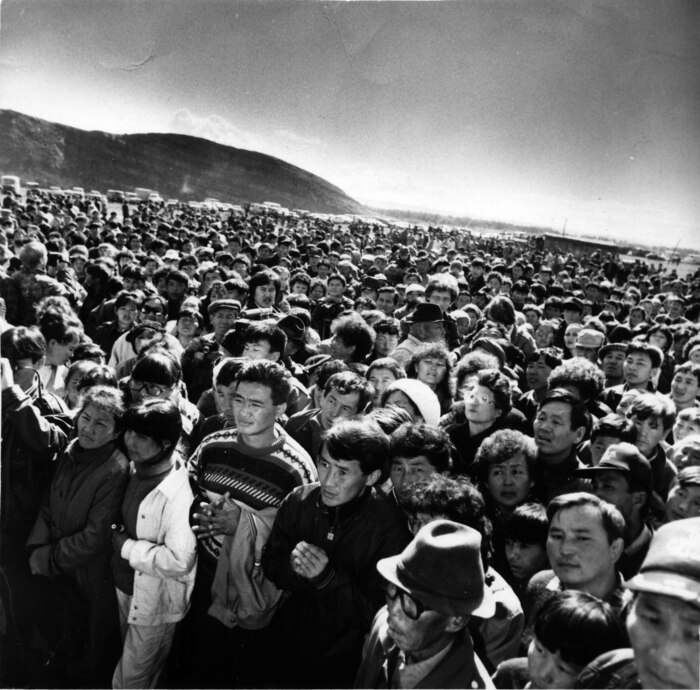
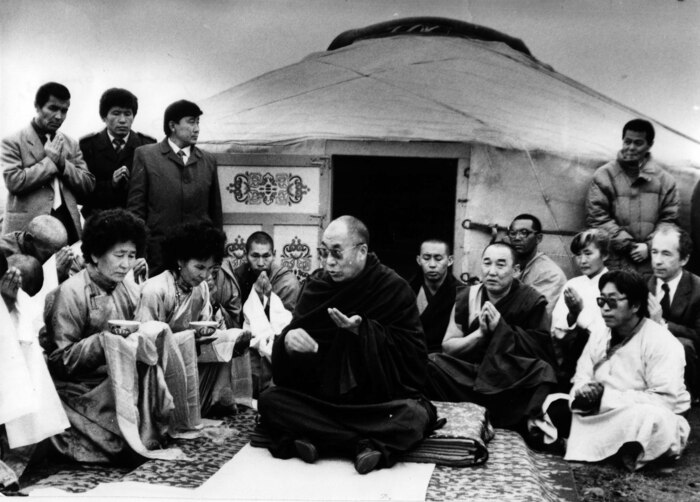
Besides Kyzyl, the Dalai Lama visited the ruins of Chadan Khure, the once largest Tuvan Buddhist monastery. All other Tuvan Buddhist temples had been made of timber and, consequently, no ruins had remained of them. There was already a small dugan temple built in the village of Haiyrykan near Chadan Khuree. His Holiness visited it and, there, the local people informed him that they were thinking about rebuilding the old great temple.
In 1994, the Tibet Support Group in Tuva was founded. It was called “Friends of Tibet Society,” following the precedent of the first such group in Russia organized in St. Petersburg. This society also spread information about Tibetan Buddhism.
In 1995, two Tibetan teachers sent from India by the Dalai Lama arrived in Tuva: Ven. Geshe Lobsang Thubten and Ven. Takpa Gyatso. Geshe Lobsang Thubten was teaching in the Tuvan language and has also published several books of basic Buddhist teachings in Tuvan. He passed away in 2022 due to COVID-19. Takpa Gyatso still lives and works in Tuva now in 2023.
In 1997, the first group of six Tuvan young men was sent to Drepung Gomang Monastery in India for Buddhist education. This year also witnessed the first All-Tuvan Buddhist Congress, where the Tuvan Buddhist umbrella organization “The Board of the Kamby Lama of the Tuva Republic” was created. Its head was given the title “Kamby Lama of the Tuva Republic” and was to be reelected every five years. Aganak Hertek, the 20-year-old assistant and translator of the two Tibetan teachers from India was elected the first to receive this title.
A number of highly qualified Buddhist teachers started to visit Tuva, among whom were Ven. Geshe Jamyang Khentse from St. Petersburg in 1996, Yeshe Lodro Rinpoche from Buryatia in 1998, the Ninth Bogdo Gegen from Mongolia in 1999, Khen Rinpoche Tsultrim Puntsog, the abbot of Drepung Gomang Monastery in India, in 2000, and several others.
The Growth of Buddhism during the 2000s and 2010s
In 2003, the Ninth Bogdo Gegen came a second time and bestowed the Kalachakra initiation. It was attended by about 50,000 persons, including pilgrims from Moscow, St. Petersburg, Novosibirsk, Buryatia, and Mongolia.
In 2006, on Mount Dogee, north of Kyzyl, a 120-meter-long Om mani padme hum mantra was created out of rocks, requiring 500 kg of whitewash to color them. It is probably the largest mantra in the world.
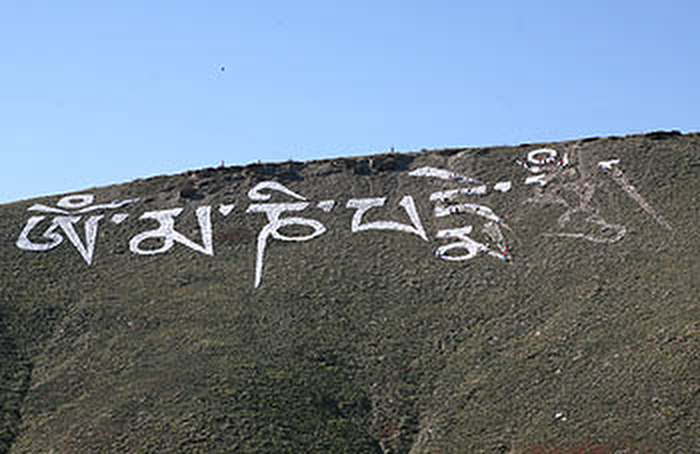
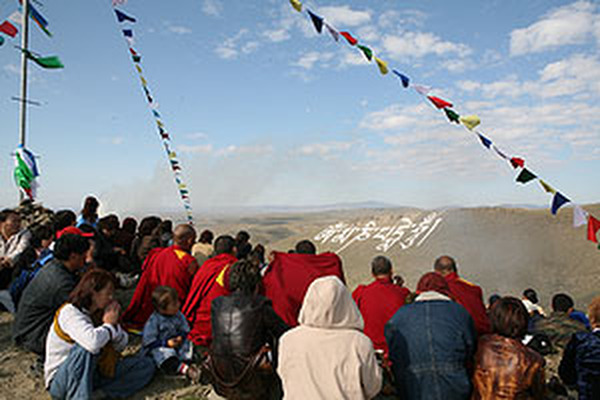
By 2007, there were already 18 Buddhist temples in Tuva with more than 50 lamas serving there; and by 2010, there were 73 suburgans (stupas) erected throughout Tuva.
Tuva became regularly visited by groups of monks from Drepung Gomang Monastery and Gyume Tantric College in India. In addition, the Tuvan monks who graduated from Drepung Gomang actively participated in the spiritual life in Tuva. For example, in October 2011, Ven. Lopsan Chopel (Igor Mongush) gave weekly lectures on Dharma in Kyzyl for the general public. The lecture hall, designed to accommodate 700 persons, was crammed with twice that number of listeners.
On July 23, 2013, the inauguration ceremony was held of the rebuilt, historical Ustuu Khuree in Chadan, with 10,000 people attending. It was decided not to restore the remains of an old khuree, but to reproduce an exact copy of the original building nearby.
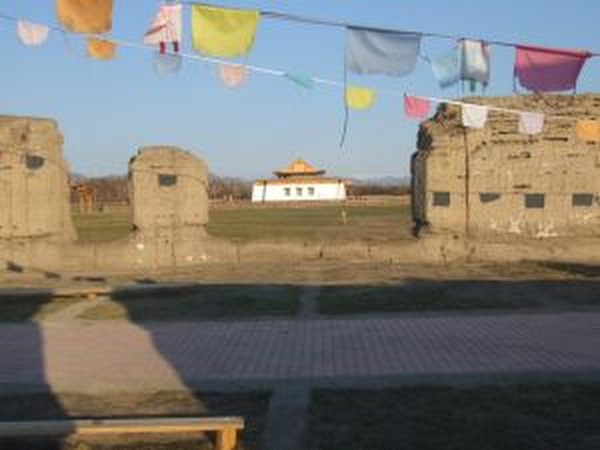
In 2013, the Interconfessional Buddhist-Orthodox Christian Council in Tuva was founded for coordinating the activities of both leading religions in the area.
In September 2015, a sad story took place in Tuva concerning Shivalha Rinpoche. Shivalha Rinpoche was the senior Drepung Gomang teacher sent to Tuva by the Dalai Lama to be the permanent resident teacher at the request of several Buddhist communities there. This request was personally delivered in India by the Tuvan President Sherig-ool Oorzhak. Rinpoche arrived in Tuva in 2008 and not only gave teachings but also built two stupas and a retreat center “Sangye Choling” for more serious practitioners.
Suddenly, however, Rinpoche received a written order from the FSB (the renamed Soviet KGB) to leave the country forever within 15 days. No reasons were given for this decision. Neither the request of the Head (the new Russian title for local Presidents) of Tuva, nor the complaint of believers to the Kyzyl city court changed anything. Still, the Buddhist life in the republic continued.
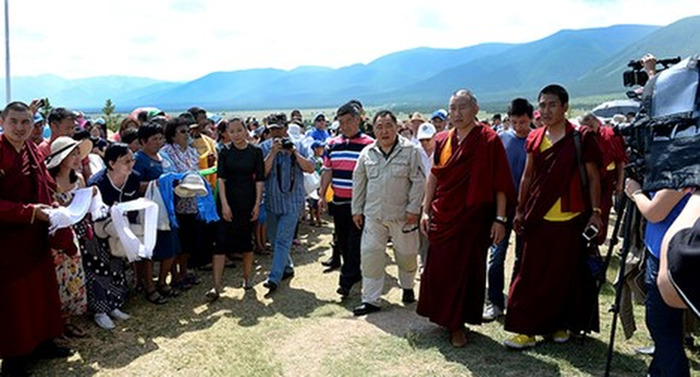
The Situation of Buddhism in the 2020s
In 2021, a Buddha statue nine meters in height, with a twelve-meter high base, was built on Mount Dogee, north of Kyzyl, where the 120-meter-long Om mani padme hum mantra is also located.
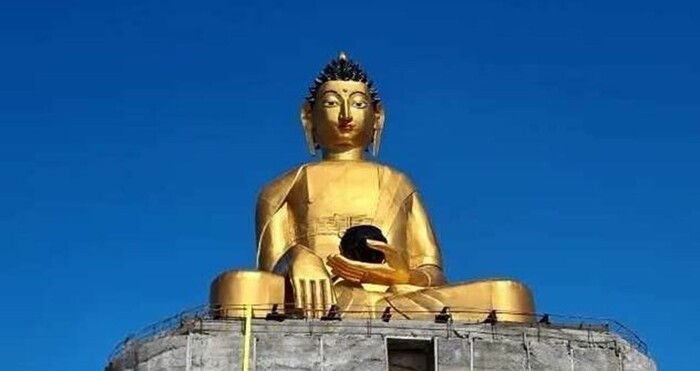
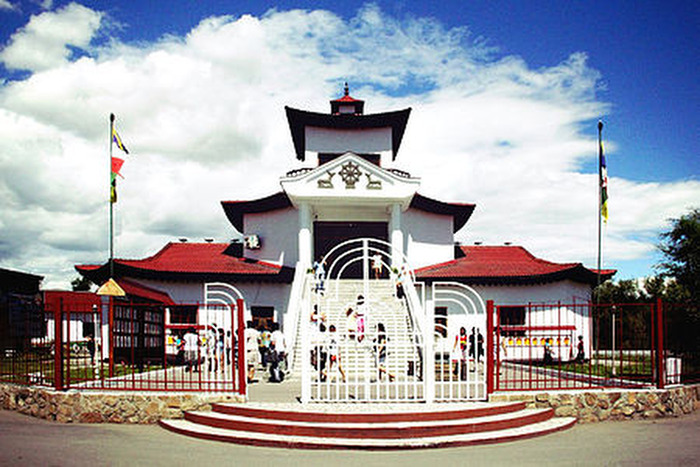
In April 2023, however, a new, much larger Buddhist monastery, 56 meters in height, was completed and inaugurated after years of construction. During his visit to Tuva of 1992, the Dalai Lama had consecrated the site where the monastery would be built. Later, he was happy to hear that this would be a monastery where the Vinaya rules of monastic discipline would be strictly followed. He donated to the monastery an original Buddha relic that he had brought with him from Tibet in 1959 and a set of his own monk robes. The relic was placed inside the main Buddha statue of the temple. Because there are few gelong (fully ordained monks) in Tuva, initially besides six Tuvan monks, six Tibetan monks from India will also reside there.
The Dalai Lama gave the name “Tubten Shedrub Ling” (The place of study and practice of the Buddha’s Teachings) to the monastery and assigned Mahakala as the chief protector deity of the temple. The unusual feature of this temple is the exhibition on the ground floor of about 3000 items of Buddhist culture, previously preserved at the National Museum of Tuva. In this way, the temple serves not only as a monastery but also as a museum of Tuvan Buddhist culture.
The main organizer and sponsor of this large project is “The Cultural Foundation Called after Kuzhuget Shoigu.” Kuzhuget Shoigu was the communist father of the present Russian Minister of Defense Sergei Shoigu. As a Tuvan national, Sergei Shoigu also backed the rebuilding of Ustuu Khure.
The abbot of this monastery, Ven. Samten Odser (Kuular Arjaan), studied first in Mongolia for three years and then graduated after the full 16-year program in Drepung Gomang Monastery in India.
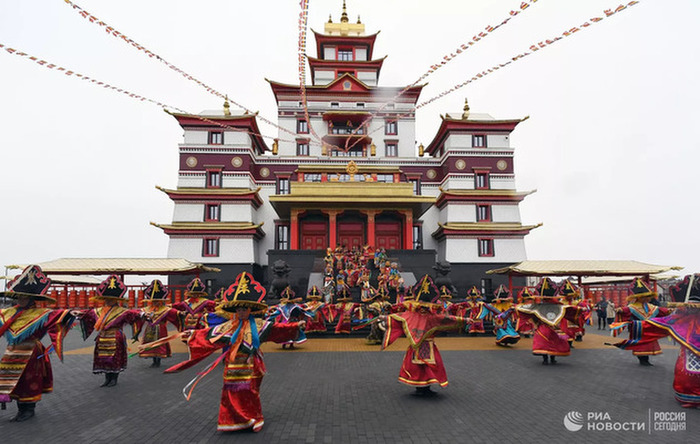
The present Kamby Lama is the genyen (layman) Gelek Natsyg Dorju (Sergek Olegovich Saryglar). He received the Geshe degree at the Buddhist University Dashi Choinkhorling in Buryatia. He was elected by secret ballot in October 2020 at the gathering of 98 lamas and representatives of public Buddhist organizations in Tuva. There were initially four candidates for the position of Kamby Lama. The previous Kamby Lama, Jampel Lodoy, passed away from health complications related to COVID-19.
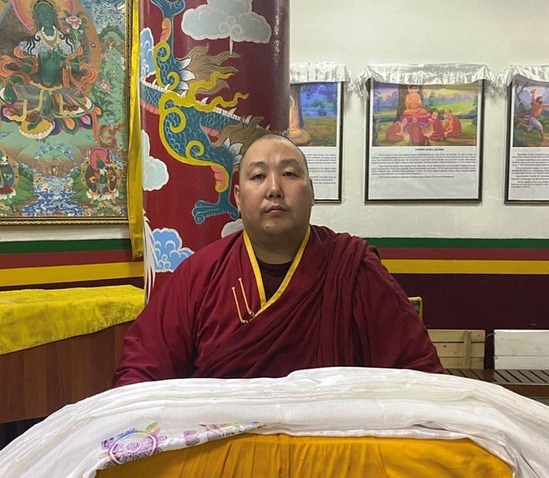
According to sociological data, at present (2023) almost 84% of the Tuvans consider themselves Buddhists, while 15 years earlier there were only 62%.
There are now several Tuva monks and lay persons with a good knowledge of Tibetan language and a classical Buddhist education who are available to teach in their homeland. Three of them – Geshe Loden Sherab (Urzhanay Dolaan Bashky), Geshe Tsultim Thayi (Dongak Evgeniy Bashky) and Geshe Samten Odser (Kuular Arjaan Bashky) – are fully ordained monks (Tuv. bashky, Skt. bhikṣu) who trained at Drepung Gomang College in India. They are currently back in India studying at Gomang for the higher Geshe degree, Geshe Lharamba.
In addition, there is the layman Mongush Igor Bashky – formerly Gelong Lopsan Chopel – who graduated from the Prajñāpāramitā course at Gomang and who is very much respected in Tuva. Further, there is Seren Solangy, the first Tuvan woman to receive the Acharya (master) degree from the University of Higher Tibetan Studies in Sarnath, India. Chechenbay Mongush has also received the Acharya degree from the same university. Working in Moscow, he is now one of the best oral translators for Tibetan teachers who come to Russia or who teach via Zoom. Finally, there are also a few other Tuvans who have studied at Gomang and at the Tibetan Medical and Astro Institute (Mentsikhang) in Dharamsala, India.
With the presence now in Tuva of many well-educated Buddhist leaders, it is hoped that they will be able to help in solving the local problems of heavy drinking and different types of misbehavior that are still widespread in Tuva, including among Buddhists, as is the case in other remote parts of Russia.